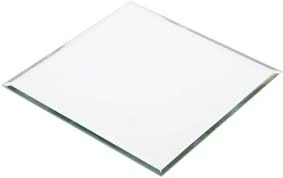

The Allure of One-Side Mirror Glass A Fascination with Reflection and Privacy
One-side mirror glass, often referred to as one-way glass, has captured the imagination of architects, designers, and private individuals alike. This fascinating material not only possesses aesthetic qualities but also provides a unique functionality that can enhance privacy and security while still allowing natural light into a space. In this article, we will explore the characteristics, applications, and cultural significance of one-side mirror glass, shedding light on why it continues to captivate audiences around the world.
Characteristics of One-Side Mirror Glass
One-side mirror glass is a special type of glass that is coated with a thin layer of metal, typically silver or aluminum. This coating gives the glass its reflective quality on one side while allowing visibility from the other. The effect is achieved through a delicate balance of light; during the day, the brighter side of the glass reflects light, creating a mirror-like effect. Conversely, when the light levels are reversed, such as at night, the privacy effect diminishes, and the internal space becomes visible from the outside.
This duality is one of the defining characteristics of one-side mirror glass, making it an intriguing choice for various applications. Its ability to control visibility while still allowing light to flow seamlessly into a space has led to its use in a variety of fields, including architecture, interior design, and even law enforcement.
Applications in Architecture and Design
In architecture, one-side mirror glass is often used in the construction of modern buildings, allowing for striking visual effects. Skyscrapers adorned with one-way glass can create stunning reflections of their surroundings, blending seamlessly into the skyline. This not only enhances the aesthetic appeal of buildings but also reduces the heat gain from sunlight, contributing to energy efficiency.
Interior designers have also embraced one-side mirror glass for its ability to enhance spatial perception. This glass can make small rooms appear larger by reflecting light and creating an illusion of depth. It is often used in conference rooms, offices, and public spaces where a sense of openness is desired without compromising privacy.
In retail, one-side mirror glass serves a dual purpose. Storefronts can utilize this material to provide a glimpse of the interior while protecting merchandise from the outside. Shoppers can peer in without feeling exposed, and store owners can maintain a level of security that traditional glass cannot provide.

Cultural Significance and Privacy Concerns
Beyond its architectural and design applications, one-side mirror glass has cultural significance that extends into the realms of psychology and social behavior. The inherent nature of this glass raises questions about privacy, surveillance, and the nature of personal space. For example, its use in law enforcement—such as interrogation rooms and observation areas—has sparked debates about ethics and the balance between security and individual rights.
In contemporary society, where personal privacy is a growing concern, one-side mirror glass serves as a metaphor for the tension between visibility and concealment. It encapsulates modern dilemmas; while individuals crave transparency and openness, they also desire moments of privacy. The very existence of one-side mirror glass symbolizes this dichotomy, reflecting our cultural anxieties about observation, judgment, and personal boundaries.
The Future of One-Side Mirror Glass
Looking forward, the potential of one-side mirror glass continues to expand as advancements in technology allow for even more innovative applications. Smart glass technologies, which can adjust their opacity with the flick of a switch, offer exciting possibilities for creating dynamic spaces where light and privacy can be manipulated to the user's preference.
As sustainability becomes a more pressing concern, one-side mirror glass presents opportunities for architecturally innovative solutions that balance aesthetics with eco-friendliness. The ongoing evolution of this material may lead to new developments that further enhance its appeal, making it an enduring choice for future generations.
Conclusion
One-side mirror glass is much more than a mere building material; it is an embodiment of modern life's complexities. Its ability to provide privacy while maintaining light and beauty resonates in various contexts, from architecture to psychology. As society continues to navigate the balance between visibility and concealment, one-side mirror glass stands as a testament to our ongoing pursuit of harmony in both our built environments and our personal lives.